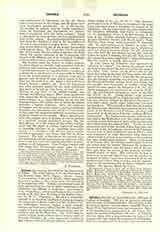

Idumea, the country inhabited by the descendants of Edom. The word Idumea is the griecized form of the Hebrew name ‘Edom (Egypt., Aduma; Assyr., U-du-um-ma-ai, Udu-mu, U-du-mi), which appears to have been applied to the region from the red color of its sandstone cliffs. Idumea was situated south of Juda and the Dead Sea, but its limits, bordering on the wilderness, are difficult to determine. According to Gen., xxxvi, 8 sqq., on leaving Chanaan, Esau took his abode on Mt. Seir, then the home of the Horites (Gen., xiv, 6; D. V.: Chorreans). Mt. Seir is commonly thought to be the Jebel esh-Shera, a range prolonging the mountains of Moab, to the E. of the `Arabah; various indications, however, suggest a more westerly location and lead one to believe that Mt. Seir should be sought rather in the highlands between Cades and the southern end of the Dead Sea. The Tel-el-Amarna tablets, indeed, speak of She-e-ri as a country south of Western Palestine; the same documents mention in that region a city of U-du-mu (Edom), in which Ed-Dome (Ruma of Jos., xv, 52—D. V.; Heb., Di’tmah), south-southwest of Hebron, is recognized, the name being sometimes used to designate the country of the Edomites. On the other hand, the route followed by the Israelites, returning from Cades to Asiongaber (A. V.: Eziongeber; Dent., ii, 8) and skirting to the east of the ‘Arabah through Salmona (unknown), Phunon (Khirbet Fenan) and Oboth (prob. Wady Weibeh), then going northeastwards to Jeabarim (Kh. ‘Ai, east-southeast of Kerak), in order “to compass the land of Edom” (Num., xxi, 4), which they were not allowed to cross (Num., xx, 17), indicates that this land did not extend beyond the ‘Arabah. Under the name of Idumea, not only Mt. Seir, but all the surrounding region inhabited by tribes claiming an Edomite descent, is usually understood.
In early times the Edomites were governed by ‘alluphim or “dukes”; but during the sojourn of the Hebrews in the desert Mt. Seir was under the control of a king. Gen., xxxvi, 31-39, gives a list of “the kings that ruled in the land of Edom, before the children of Israel had a king”; from this list we gather that the Edomite monarchy was elective. In spite of the blood-relationship uniting Israel and Edom, the two peoples were frequently in conflict. Saul had turned his army against the Edomites (I K., xiv, 47); David conquered and garrisoned the country (II K., viii, 14) and Solomon occupied its ports on the Red Sea (III K., ix, 26). During Joram’s reign, Idumea succeeded in shaking off for a while the yoke of Jerusalem, but Amasias obliged the Edomites once more to own Juda’s sway; finally under Achaz they won their independence. With the fall of Juda into the hands of the Babylonians, whom they had joined in the fray, the power of the Edomites waxed stronger, and they took possession of all Southern Palestine, making Hebron their capital. But despite their alliance with the Syrians during the Machabean war, they could not with-stand the sturdy onslaught of the Israelite patriots who drove them from the south of Juda. The loss of their possessions east of the ‘Arabah, fallen long since into the hands of the Nabathaeans, rendered the Edomites an easy prey to their neighbors, and in 109 B.C. they were conquered by John Hyrcanus, who, however, allowed them to remain in the country on the condition that they should adopt Judaism. When, at the death of Alexandra (69), Aristobulus endeavored to wrest the crown from his brother Hyrcanus II, Antipater, Governor of Idumea, took the latter’s side in the conflict, and, upon the arrival of the Romans, attached himself closely to them. The assistance he lent to their army in several expeditions, and the services he rendered to Julius Caesar were rewarded in 47 by the much-coveted title of Roman citizen and the appointment to the procuratorship of Judea, Samaria, and Galilee. His son was Herod the Great.
CHARLES L. SOUVAY

